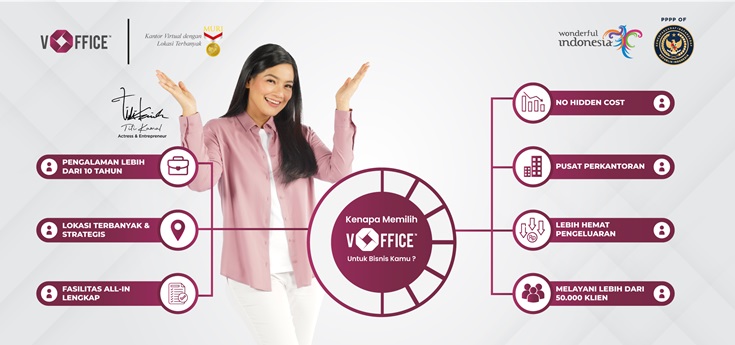Steve Jobs is one of the prominent figures in the history of technology. He is the mastermind behind the success of Apple Inc., a company that has revolutionized the way we interact with technology. In this article, we will delve into Steve Jobs’ biography, exploring his personal life, significant achievements in the business world, and his impact on the technology industry.
Biography of Steve Jobs
Steven Paul Jobs was born in California, USA, on February 24, 1955. Steve Jobs had a father named Abdulfattah Jandali, a visiting student from Syria who later became a political science professor. His mother’s name is Joanne Simpson.
Childhood
As a baby, Steve Jobs was adopted by Paul and Clara Jobs, who lived in Santa Clara County, California. His adoptive parents gave him the name Steve Jobs. His biological parents later married and gave him a younger sister named Mona Simpson, who is now a well-known novelist.
Steve Jobs attended middle and high school in Cupertino, California. It is recounted that after school hours, he often taught at Hewlett Packard Company in Palo Alto, California. It’s no wonder that shortly after, he and Steve Wozniak became part-time employees at this company.
In 1972, Jobs graduated from Homestead High School in Cupertino, California, and enrolled at Reed College in Portland, Oregon, but dropped out after one semester. However, he soon enrolled at Reed College again, and one of the things he learned there was calligraphy.
“…If I had never dropped in on that single course in college, the Mac would have never had multiple typefaces or proportionally spaced fonts.” – Steve Jobs
In the fall of 1974, Steve Jobs returned to California and started attending meetings of the “Homebrew Computer Club” with Steve Wozniak.
Steve Jobs and Wozniak worked together at Atari Inc., a well-known computer game maker, in the role of game designers. His motivation at that time was to raise money for a spiritual trip to India.
Steve Jobs later embarked on a spiritual journey to India with his friend from Reed College, Daniel Kottke, who later became Apple’s first employee.
Returning from India, he became a Buddhist with a shaved head and wore traditional Indian clothing (monk attire?).
During this time, he practiced psychedelics (a form of meditation, and Jobs was often considered eccentric for walking barefoot in the snow – a kind of mindfulness meditation). These were two or three of the most significant things he ever did in his life.
Founding Apple Computer
In the biography of Steve Jobs, it is known that in 1976, at the age of 21, Steve Jobs and Steve Wozniak, at the age of 26, founded Apple Computer Co. in the Jobs family garage. The personal computer introduced by Jobs and Wozniak was named Apple I.
The computer was sold for $666.66, a reference to Wozniak’s Dial-A-Joke machine’s phone number, which ended in -6666.
In 1977, Jobs and Wozniak introduced the Apple II, which was a great success in the home market and had a significant impact on the young personal computer industry.
In 1980, Apple Computer went public, and with a successful initial public offering, Jobs’ fame grew. That same year, Apple Computer released the Apple III, although its success was not as significant as the previous models.
As Apple Computer expanded, the company began to seek new leadership to help manage its development.
In 1983, Jobs recruited John Sculley from Pepsi-Cola to lead Apple Computer, challenging him, “Do you want to just sell sugared water for the rest of your life, or do you want to change the world?”
That same year, Apple also released the Apple Lisa, which had advanced technology at the time but failed to attract buyers in the market.
1984 marked the introduction of the Macintosh, the first computer successfully sold to the market with a graphical user interface.
The development of Mac was initiated by Jef Raskin and the team used technology not developed by Apple, such as in Xerox’s PARC. However, it was not commercialized immediately. The success of the Macintosh led Apple to neglect the Apple II in favor of Mac production, which continues to this day.
Steve Jobs Leaves Apple Computer
Although Jobs was very persuasive and charismatic at Apple, many considered him a leader who easily changed his mind and had high emotions.
In 1985, after causing many leadership issues within Apple, Sculley fired Jobs from his position and expelled him from Apple.
In Steve Jobs’ biography, it is known that after leaving Apple, Jobs founded another computer company, NeXT Computer, which, like Lisa, was technologically advanced but never became famous, except in scientific research circles.
(Tim Berners-Lee developed the World Wide Web system at CERN using a NeXT workstation.) However, NeXT helped advance technologies such as object-oriented programming, PostScript, and magneto-optical devices.
Return to Apple
In 1996, Apple purchased NeXT for $402 million, bringing Jobs back to the company he founded. In 1997, he became the interim leader at Apple after the departure of Gil Amelio.
With the acquisition of NeXT, many technologies from NeXT were applied to Apple’s products, especially NeXTSTEP, which evolved into Mac OS X. Under Jobs’ guidance, the company improved its sales after introducing the iMac.
iMac was the first computer sold with an emphasis on its appearance (although it also incorporated advanced technology). Since then, attractive design and a well-known brand have been advantageous for Apple.
In recent years, Apple has expanded its reach. With the introduction of the iPod portable music player, iTunes software, and the iTunes Music Store, the company made strides in the personal electronics and online music fields.
While stimulating innovation, Jobs also reminded his subordinates that “real artists ship,” meaning that producing works on time is as important as innovation and quality products.
Figure of Apple’s Success
Jobs worked at Apple for several years with a salary of $1 per year. Because of this, he was recorded in the Guinness World Records as the “lowest-paid Chief Executive Officer.”
After Apple began to regain its sales profit, the company removed its temporary leader title. According to an article on Bloomberg’s website in 2003, his income at Apple was $219 million.
Jobs was highly admired for his ability to convince people and be an excellent salesman, often referred to as a reality distortion field. This was evident when he gave keynote speeches at Apple expos.
However, his persistence also invited misfortune. His headstrong nature may have caused Apple to miss golden opportunities to become a leader in the personal computer field.
His reluctance to let other companies make computers compatible with Macintosh resulted in Apple losing to the competition in gaining users of personal computers. The hardware and software company eventually decided to adopt the IBM PC platform using Microsoft’s operating system. Microsoft later caught up with Apple by developing their own graphical user interface, Microsoft Windows.
Founding Pixar Studio
In 1986, Jobs, along with Edwin Catmull, founded Pixar, a computer animation studio in Emeryville, California. The company was established from what was formerly the computer graphics division of Lucasfilm, which Jobs bought from its founder, George Lucas, for $10 million.
A decade later, Pixar became famous and successful with its breakthrough film, Toy Story. Since then, Pixar has produced award-winning films such as Finding Nemo and The Incredibles.
Due to his leadership at Pixar and his success at Apple, Jobs was considered by many entertainment industry observers as a potential successor to Michael Eisner as the leader of The Walt Disney Company, which distributed and funded Pixar’s films.
On August 25, 2011, Steven Paul Jobs, the Founder and CEO of Apple Inc., officially resigned from his position. However, he continued to be remembered by the world for his contributions.
Steve Jobs’ Passing
Steve Jobs passed away at the age of 56 after battling pancreatic cancer that had ravaged his body for the last few years. The announcement of “Steve Jobs has passed away” was made by Apple’s leadership on the evening of October 5, 2011.
This Silicon Valley icon is remembered for entertaining the world with the iPod, iPhone, and, lastly, the iPad. In August of that year, he had just handed over the CEO position to Tim Cook.
Steve Jobs is recognized as a legend at Apple, arguably the most innovative technology maestro of this century. Farewell to the maestro.
After reading the biography of this inspirational figure, are you interested in starting or expanding a business? If so, you can rely on the services of vOffice. Our professional team is ready to assist you with various business needs, such as:
- Establishment of Limited Liability Company (PT)
- Establishment of Commanditaire Vennootschap (CV)
- Haki / Indonesia trademark registration
- Tax Consultation
- Virtual Office
- Office Space for Rent
- Meeting Room Rental
- and various other services.
Contact us now and get special offers!
[contact-form-7 id=”f1aa646″ title=”Contact Form Blog_EN”]










